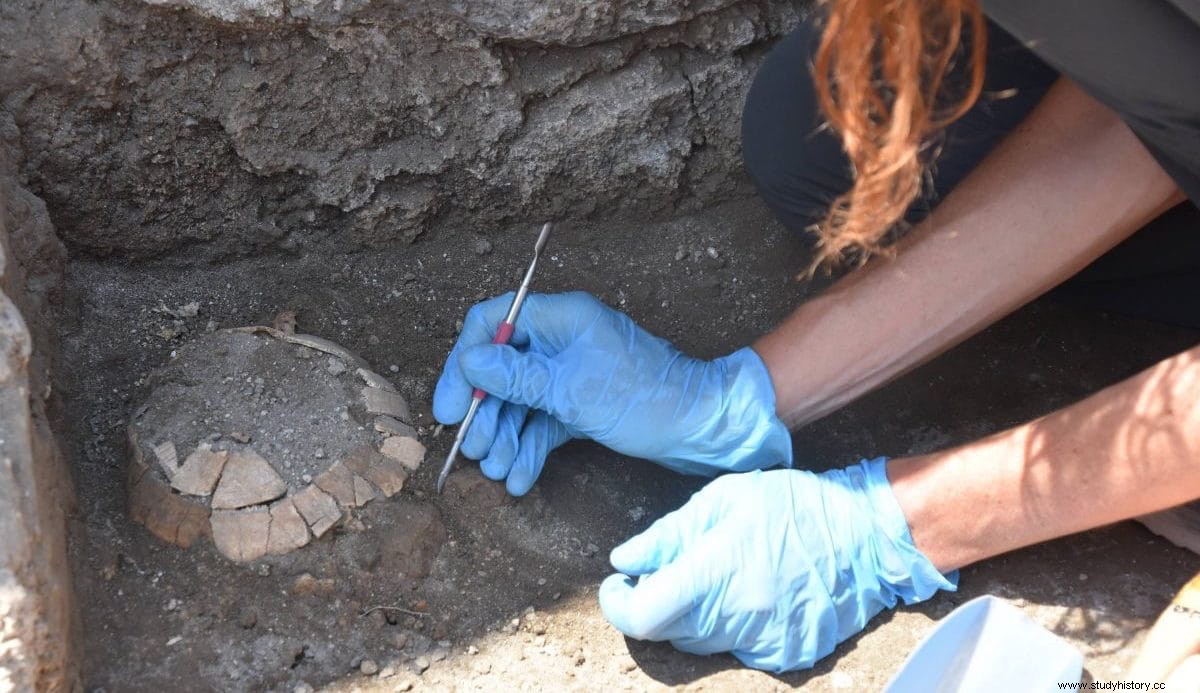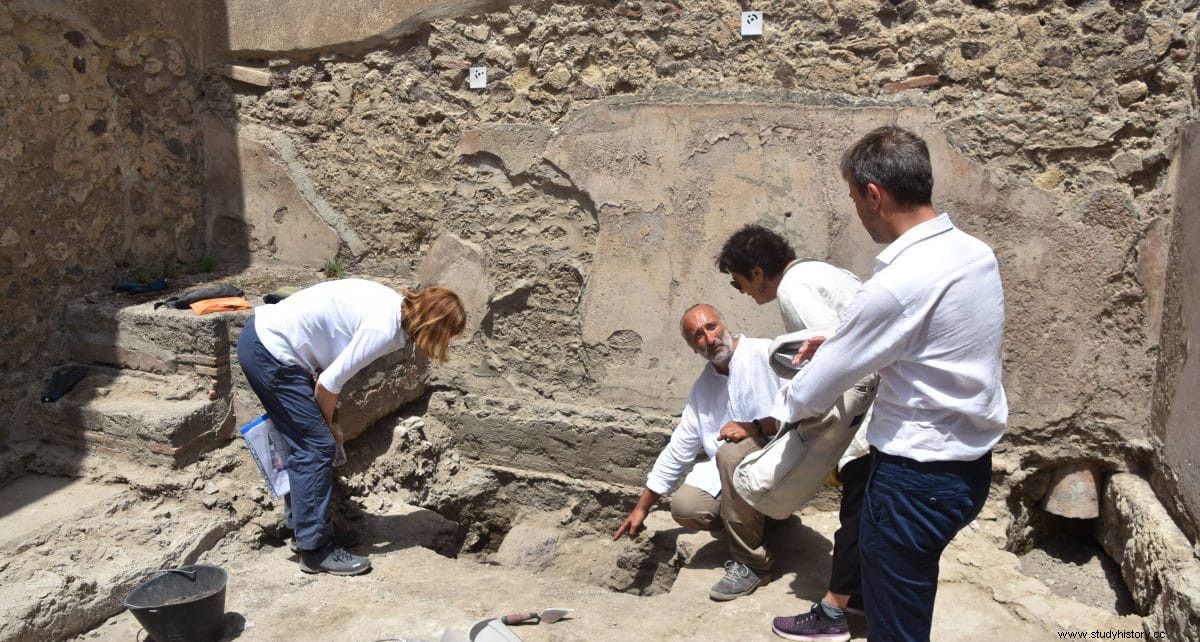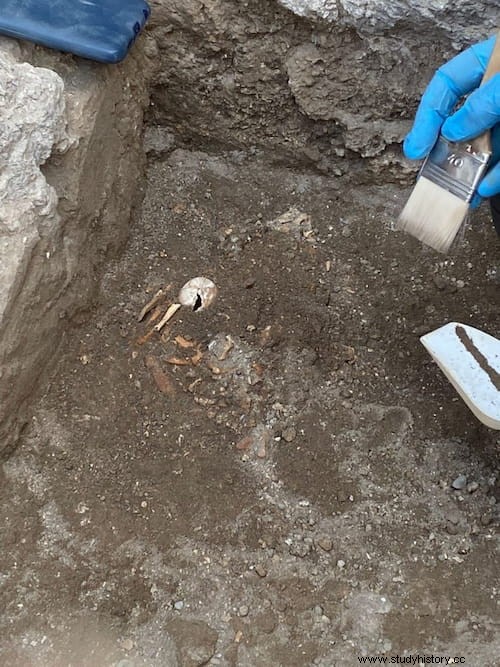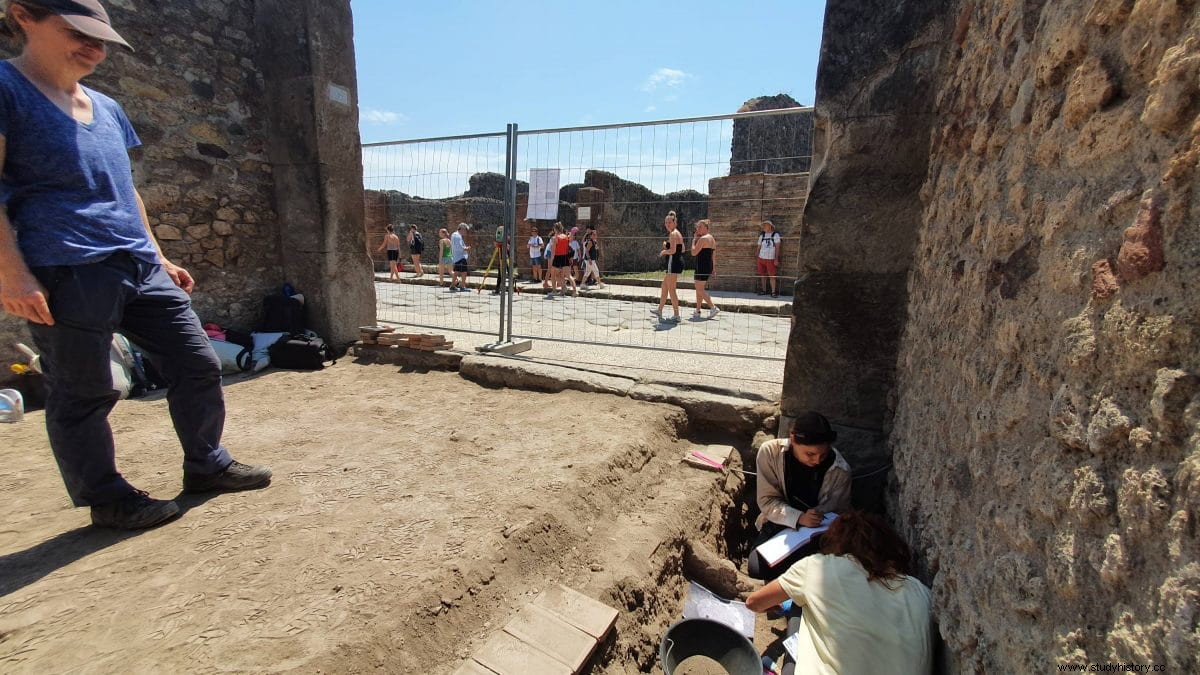Archaeologists found the remains of a tortoise, with its fragile egg encased in its shell, in a shop on Via dell'Abbondanza in the Pompeii city site. The finding is proof of the vast ecosystem of Pompeii, made up of natural and not only human traces, and a precious archaeological clue to the last phase of the life of the city, after a strong earthquake in the year 62 and before the fateful eruption from '79.
The unusual find occurred within the framework of an excavation and research campaign on the Stabian baths, carried out by the FreieUniversität of Berlin and the University of Naples L'Orientale, with the University of Oxford in collaboration with the Pompeii Archaeological Park , whose objective is to investigate the urban development of the residential area before the construction of the baths.
In particular, the remains of a sumptuous domus with refined mosaics and wall paintings, dating from the 1st century BC. and which was leveled after the earthquake that devastated Pompeii and much of Campania in AD 62, have turned up in the workshops on the southeast side of the baths along the Via dell'Abbondanza and the Vicolo del Lupanare. Later, the area was used for the extension of the bath complex at the intersection of Via dell'Abbondanza and Via Stabiana.

«The ongoing excavation campaign in Pompeii -says the Minister of Culture, Dario Franceschini- continues to reserve important finds and new discoveries, which confirm the extraordinary richness of this authentic chest of history and memory that fascinates the whole world .
During the excavation, a small reptile was unexpectedly discovered:the archaeological layers in which it was found were accumulations of detritus, formed after the dismantling of the workshop in question, with a view to its re-functionalization. During the reconstruction and renovation phase between the earthquake and the eruption, the reptile had been able to enter the disused spaces and dig, undisturbed, a shelter.

It is not the first discovery of tortoises in Pompeii, but they were usually found in gardens or areas within rich domus, such as the house of Julius Polybius.
The tortoise was documented and extracted in three successive stages:documentation of the shell (about 14 centimeters, while a fully mature specimen usually measures between 20 and 24 centimeters), the internal skeleton of the animal and the platron (that is, the ventral part shell). The finding was transferred to the Park's Applied Research Laboratory, where it will be studied and analyzed by the Park's archaeozoologist.

The specimen of Testudo hermanni , a local female species, had probably taken refuge in the abandoned space to find a suitable place to lay her single egg (normally 1-5 eggs are laid).
Tortoises have a peculiarity, dystocia, which means that if they don't find a suitable place, they can retain their eggs, which often leads to deadly problems. Therefore, they prefer to die rather than lay their eggs where the environment is not conducive. The intrusion of the animal was not noticed by those in charge of the reform of the store, and its remains were covered without being seen.
Both the presence of the tortoise in the city and the abandonment of the sumptuous domus that gave way to a new sector of the Stabian baths illustrate the extent of the transformations after the earthquake of 62 AD . – declares the CEO Gabriel Zuchtriegel – Evidently, not all the houses were rebuilt and the areas, even the central ones, of the city were barely frequented to the point of becoming the habitat of wild animals; at the same time, the enlargement of the baths is proof of the great confidence with which Pompeii restarted after the earthquake, only to be crushed in a single day in AD 79. The tortoise adds a piece to this mosaic of relations between culture and nature, community and environment that represent the history of ancient Pompeii. In the coming years, the study of organic finds and research on agriculture, economy and demography in Pompeii and its territory will be a priority in our research, protection and enhancement strategy, also to give more visibility to the sites and monuments outside the urban center, such as the rustic village of Boscoreale and the villas of Torre Annunziata and Castellammare di Stabia .

The excavation carried out by the international team of the three universities - which is also a didactic excavation aimed at training new generations of young archaeologists - investigated west of the entrance to the baths on Via dell'Abbondanza, the workshops of numbers 6 and 7, characterized by a facade of Nocera tuff blocks.
Store 6, where the discovery was made, was in its first phases attached to the bathrooms through a door in the north wall, which was later closed. In the southwest corner of the workshop, a quadrangular font, covered with earthenware, had been built in a phase prior to the earthquake of 62 AD. Right next to the basin, on the outer side, in the corner between the north wall of the basin and the west wall of the workshop, the tortoise was found, which had made its burrow after digging a small tunnel from the ground behind the earthquake to a protected area.
